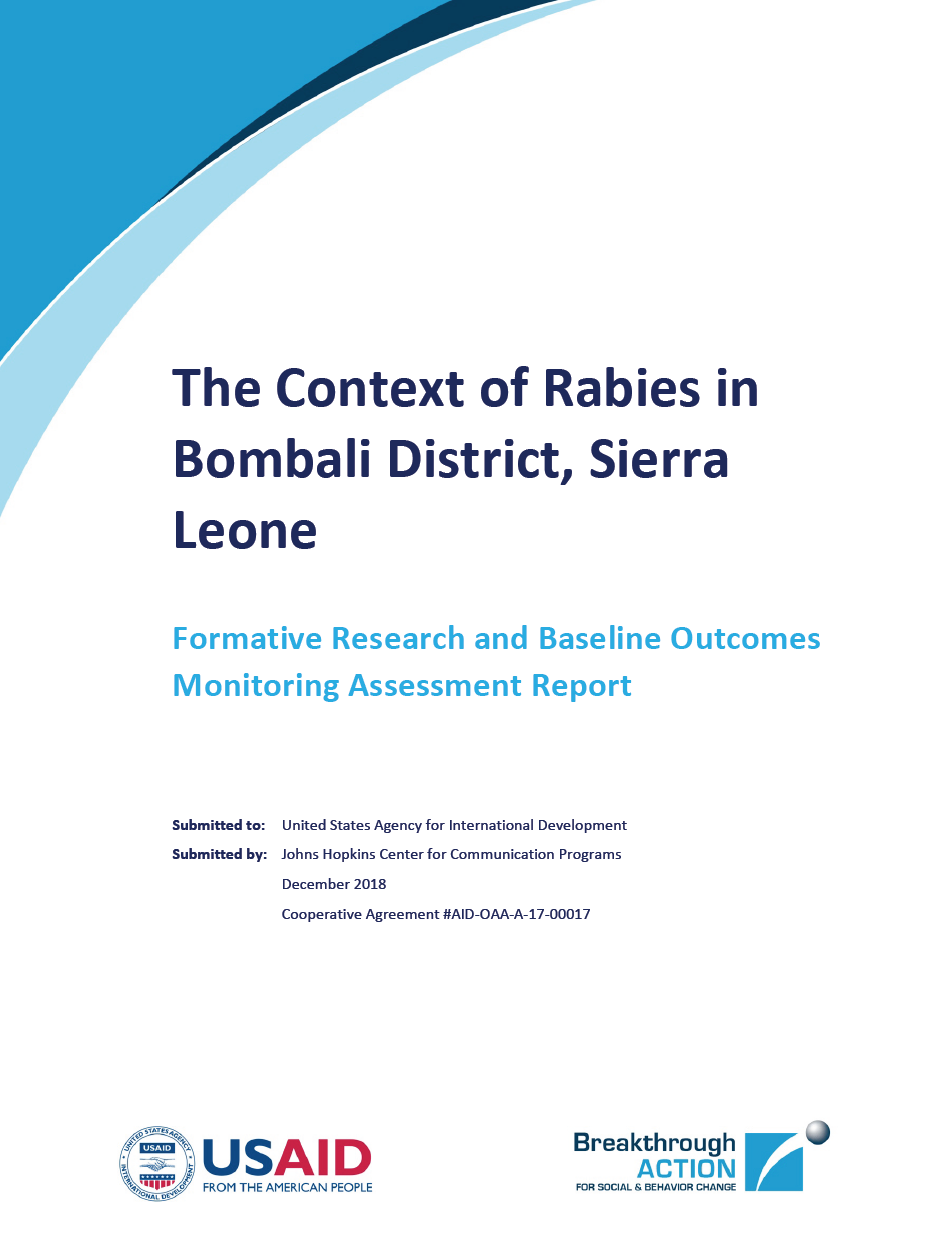The Context of Rabies in Bombali District, Sierra Leone: Formative Research and Baseline Outcomes Monitoring Assessment Report
Rabies is the second most important priority zoonotic disease (PZD) in Sierra Leone. There is little information about community-level perceptions and behaviors that influence rabies risk in Sierra Leone, and community needs for effective rabies prevention and control. Understanding community needs and their resources and capital for supporting a comprehensive rabies control program can guide development of behavior change interventions and facilitate community engagement with social and behavior change (SBC) programs.
Formative research was conducted to understand the socio-cultural context of rabies in Sierra Leone. Fifteen focus groups were conducted with children and adults in five constituencies and 16 communities of Bombali District. This analysis explores the question: What are the perceived community needs for rabies prevention and risk reduction, and how may they inform design of a communication campaign for rabies prevention? Data analysis was coded to organize the data into themes and relationships.
Perceived community needs for SBC messages included: education, guidelines for safe human-animal interactions, responsible animal ownership, vaccines and medicines, access to trained animal health workers including new cadres of animal health workers, and regulatory and reporting structures for risk incidents. The findings reinforce the need for an intersectoral approach to rabies prevention that includes communities, health, education, and agriculture sectors, and supply chain management. The findings support also the WHO guiding framework for global action to eliminate rabies, specifically understanding socio-cultural context for behavior change, increasing awareness and knowledge, strengthening animal and public health systems, and intersectoral partnership and coordination.
Source: Johns Hopkins Center for Communication Programs
Date of Publication: December 2, 2022

